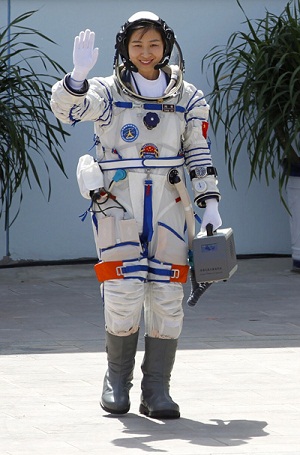Source: pcmag.com
China on Saturday launched its Shenzhou-9 spacecraft carrying three astronauts, including Liu Yang, the first Chinese woman to travel to space. The Long March-2F rocket lifted off successfully from the Jiuquan Satellite Launch Center in northwest China at 6:37 p.m local time and the Shenzhou-9 capsule separated from its booster shortly thereafter and entered orbit.
Known as Taikonauts in China, Liu and her male traveling companions are embarking on a 13-day mission to rendezvous with the country's Tiangong-1 space station module. This month's undertaking marks an important step for the country's space program. It is China's first attempted manned docking mission with an orbiting spacecraft, a feat that has only been accomplished by the United States and Russia.
The China National Space Administration (CNSA) has now sent eight astronauts into space, including two-time space traveler Jing Haipeng, who is onboard Shenzhou-9 with Liu Yang and Liu Wang, the third member of the crew.
The launch was televised in China by state-run CCTV.
Liu Yang was one of two female candidates for the mission from the Chinese Air Force's Wuhan Flight Unit, according to China's official Xinhua news agency. She was selected over Wang Yaping.
"Today's successful launch is a great first step. I hope the astronauts will bring us more good news like this in the coming days," said CCTV presenter Kang Hui, according to the Los Angeles Times.
The 9.4-ton Tiangong-1 module, launched and placed in orbit last September, is not a fully developed space station but rather a testing platform for rendezvous and docking missions like the one upon which the Shenzhou-9 is currently embarked. The CNSA aims to eventually launch a fully functioning space station as part of the agency's Tiangong, or "Heavenly Palace" program.
"The Shenzhou-9 will perform our country's first manned space docking mission with the orbiting Tiangong-1 space lab module," said Zhou Jianping, chief designer of CNSA's manned space program, a few days before Saturday's launch. "It means China's spacecraft will become a genuine manned shuttle tool between space and Earth. It can send human beings to space stations or space labs. This will be a significant step in China's manned space flight history."
The unmanned Shenzou-8 spacecraft successfully docked with Tiangong-1 last November. The upcoming mission calls for two astronauts to board the space station module, with the third remaining in the Shenzou-9 spacecraft.
Tiangong-1 is scheduled to be de-orbited in 2013 following the Shenzou-9 mission and another manned mission to the module.
|



